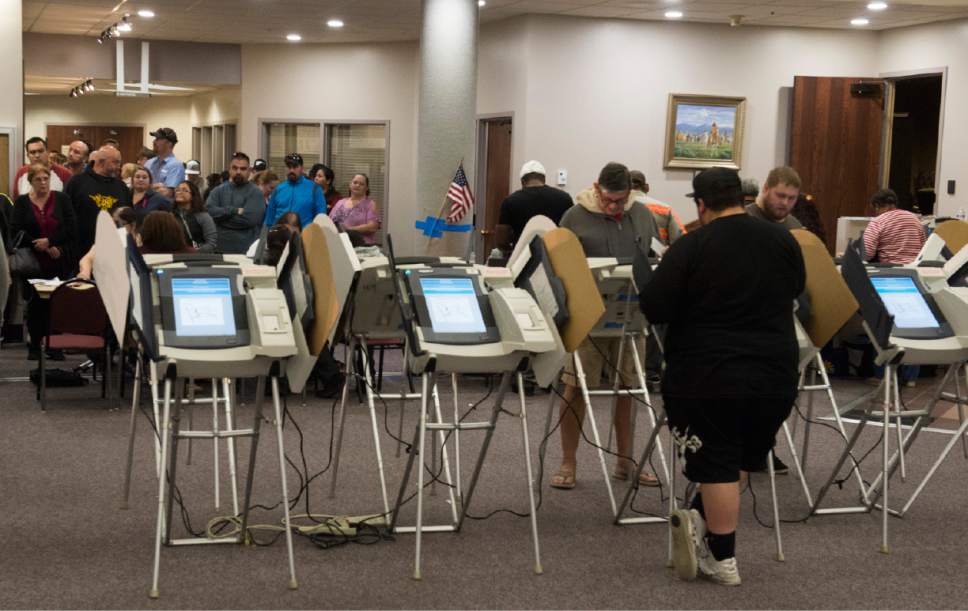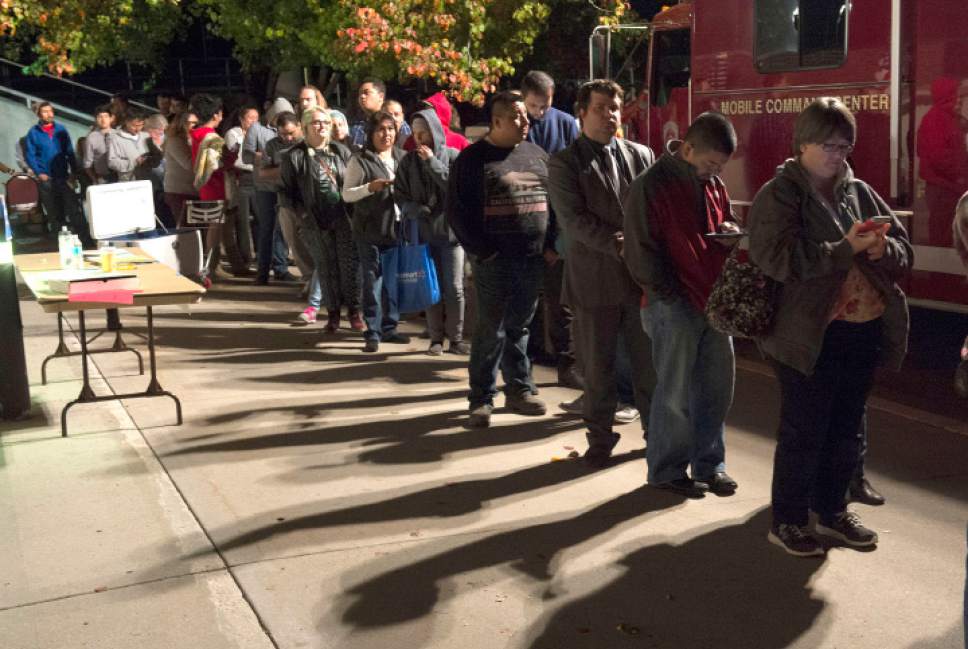This is an archived article that was published on sltrib.com in 2017, and information in the article may be outdated. It is provided only for personal research purposes and may not be reprinted.
After last year's wild elections, Lt. Gov. Spencer Cox — the state's top election official — proudly reported that more Utahns voted than ever, and the percentage of registered voters who cast ballots was the highest in four decades.
However, a study released Thursday says Utahns still managed to rank No. 39 nationally among the 50 states for voter turnout by all citizens of voting age — whether they are registered or not.
That was up only one spot from No. 40 in 2012, the previous presidential election.
Last November, 57.7 percent of Utah's voting-eligible population cast ballots, compared with 55.5 percent in 2012, according to a report by Nonprofit Vote and the U.S. Elections Project.
Despite some improvement, Utah was still lower than the average national voter turnout of 60.2 percent.
In comparison, the highest turnout in the nation was in Minnesota at 74.8 percent of the voting-eligible population, followed by Maine at 72.8 percent and New Hampshire at 72.5 percent.
The lowest turnout was in Hawaii at 43 percent (the only state where fewer than half the eligible voters cast ballots), followed by West Virginia at 50.8 percent and Texas at 51.6 percent.
The report said that nationally, "Four in 10 eligible voters didn't vote. Among the most common reasons voters cite for not voting are lack of competition and meaningful choices on the ballot or problems with their voter registration or getting to the polls."
The study noted that the six highest-ranking states offered same-day voter registration — allowing people to fix problems with registration on Election Day. States with that option had voter turnout 7 percentage points higher than average.
Utah allowed that option in a handful of counties, including Salt Lake County, as part of a pilot project.
The project also noted that states that had all-by-mail voting statewide had an average voter turnout of 68 percent. In Utah, 21 of 29 counties voted mostly by mail.
Also, most states with high turnout were "battleground states" where presidential candidates focused efforts and visits before the election.
When Cox released official turnout numbers after the November election, he noted that 1,152,369 Utahns cast ballots, a record for the growing state.
He also said that was 82 percent of the state's "active registered voters," defined as anyone who has voted or registered during the past eight years. That was the highest such number since 1964, according to Cox's office.
Cox at the official canvass said Utah's turnout was higher this year because of two main factors: presidential candidates paying more attention to the state and greater use of by-mail voting.
"We had a lot more attention than we normally would during a presidential election," Cox said, "and clearly that helped to drive turnout."
During the primary elections, Republicans Donald Trump, Ted Cruz and John Kasich visited Utah, as did Democrat Bernie Sanders. Independent Evan McMullin spent a lot of time in the state in his late-appearing campaign.
At one point just before the election, polls showed a dead heat among Trump, Democrat Hillary Clinton and McMullin. In the end, Trump took Utah with 45.5 percent of the vote, trailed by Clinton with 27.5 percent and McMulllin, 21.5 percent.
Cox noted the 21 Utah counties that used by-mail voting this year all had higher turnout rates than the eight that offered only traditional in-person voting on Election Day. —
Highest turnout in 2016 election
1. Minnesota, 74.8%
2. Maine, 72.8%
3. New Hampshire, 72.5%
4. Colorado, 72.1%
5. Wisconsin, 70.5%
...
39. Utah, 57.7%
—
Lowest turnout in 2016 election
46. Arkansas, 53.1%
47. Tennessee, 52.0%
48. Texas, 51.6%
49. West Virginia, 50.8%
50. Hawaii, 43%
National average: 60.2%
Source: Study by Nonprofit Vote and the U.S. Elections Project.





